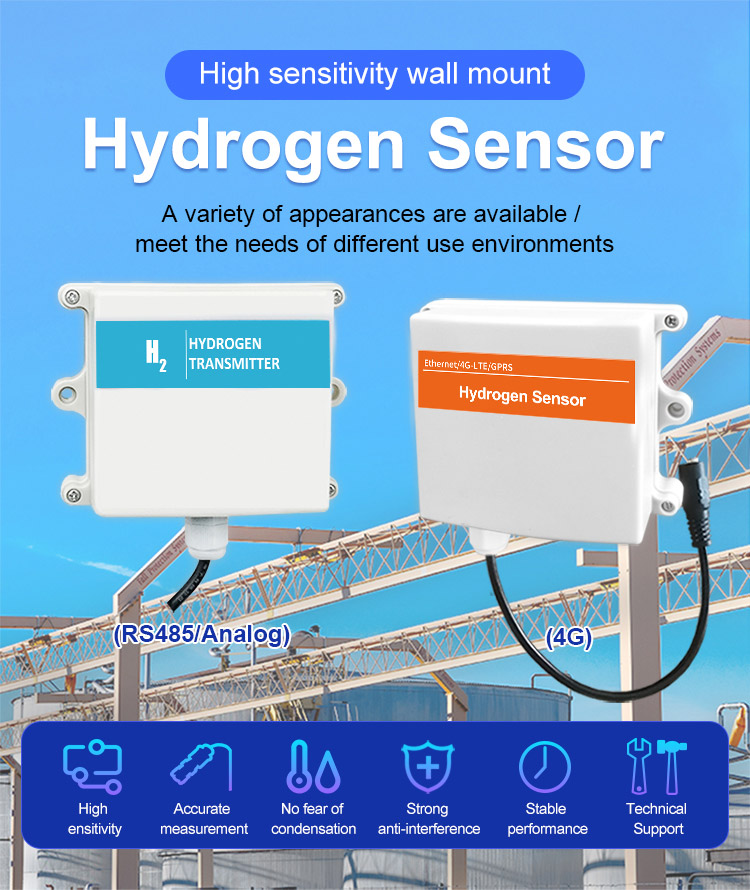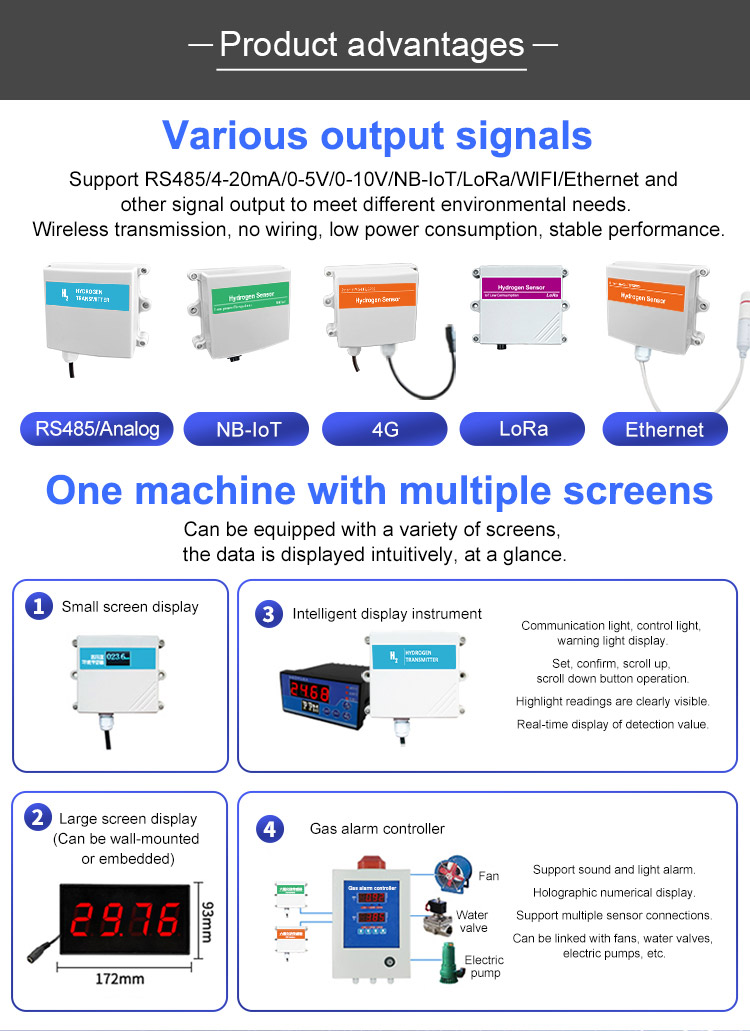Introduction to Hydrogen Sensor
Hydrogen sensor is a special device to detect the concentration of hydrogen in the surrounding environment. These sensors utilize various detection technologies, including electrochemical, solid-state, and thermal conductivity sensors, to provide accurate and reliable measurements. They offer real-time monitoring capabilities and trigger alarms when hydrogen concentrations surpass predetermined thresholds.

Understanding the Risks of Hydrogen Gas
Hydrogen gas is colorless, odorless, and highly flammable. It can form explosive mixtures with air when concentrations reach specific limits. In industrial settings where hydrogen is used or produced, such as fuel cells, chemical plants, and laboratories, the potential for hydrogen leaks or accumulation exists. Therefore, effective hydrogen gas detection systems are essential for minimizing the risk of accidents and protecting personnel and assets.
Advantages of Hydrogen Sensors

Hydrogen sensor offer several advantages in enhancing safety in industrial environments. Firstly, they enable early detection of hydrogen gas leaks, allowing for immediate response and preventive measures. This helps to avoid the build-up of potentially explosive hydrogen concentrations. Secondly, hydrogen sensors provide continuous monitoring, ensuring that hydrogen gas levels are constantly monitored even in unmanned or remote locations. This proactive approach significantly reduces the chances of accidents and potential damage to equipment and infrastructure.
Application in Fuel Cells and Hydrogen Storage
Fuel cells and hydrogen storage systems are critical elements in the transition towards clean energy. However, the safe operation of these systems heavily relies on accurate and reliable hydrogen sensing technology. Hydrogen sensors play a vital role in detecting hydrogen leaks within fuel cell stacks and storage containers. This allows for prompt action to mitigate the risks associated with hydrogen accumulation and potential ignition.
Application in Chemical Plants and Laboratories
Chemical plants and laboratories often deal with hydrogen gas as a feedstock or byproduct. The presence of hydrogen gas in these environments necessitates robust gas detection systems. Hydrogen sensors provide continuous monitoring, enabling the detection of leaks or accidental releases. With their ability to trigger alarms, hydrogen sensors alert personnel to potential dangers and facilitate a swift response to prevent accidents or explosions.
Integration with Safety Systems
Hydrogen sensor can match with the security system, such as ventilation control or automatic shut-off mechanisms. When hydrogen gas levels exceed acceptable limits, the sensors send signals to activate appropriate safety measures. Integration with safety systems ensures prompt actions are taken in response to hazardous situations, minimizing the potential for incidents and injuries.
Future Developments and Challenges
Advancements in hydrogen sensor technology continue to improve performance, reliability, and sensitivity. Future developments may include smaller and more cost-effective sensors, wireless connectivity for remote monitoring, and increased compatibility with different industrial environments. However, challenges remain, such as sensor calibration, false alarms due to interference from other gases, and ensuring long-term stability and durability under various operating conditions.
Conclusion:
Hydrogen sensors play a vital role in enhancing safety in industrial environments where hydrogen gas is present. By providing real-time monitoring and early detection, these sensors enable prompt actions to mitigate potential hazards and prevent accidents. Integration with safety systems further enhances their effectiveness. As technology continues to advance, hydrogen sensors will continue to evolve, contributing to safer working conditions and facilitating the widespread adoption of hydrogen as a clean energy source.
